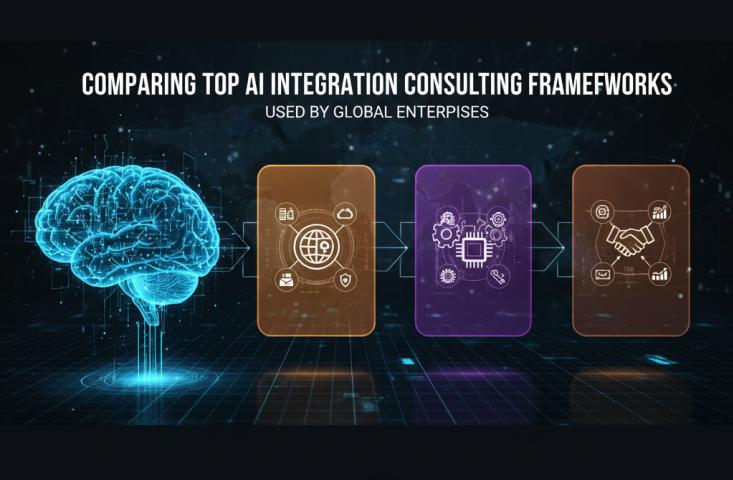In today’s digital age, businesses must constantly adapt to survive and thrive. However, many organizations still rely on outdated legacy systems that can’t keep up with modern demands. This is where application modernization services become essential in driving digital transformation. By modernizing legacy applications, businesses can harness the power of new technologies, improve operational efficiency, and enhance customer experiences.
This article will explore how application modernization services serve as a catalyst for digital transformation, the key strategies involved, and the benefits they bring to organizations looking to stay competitive in a rapidly changing digital landscape.
What Are Application Modernization Services in Digital Transformation?
Application modernization services are the processes and strategies used to update and transform legacy applications so they can operate efficiently in today’s fast-paced digital world. These services involve upgrading application architectures, refactoring code, migrating to cloud platforms, and integrating with modern technologies like artificial intelligence (AI), machine learning (ML), and the Internet of Things (IoT).
As a critical part of digital transformation, modernizing applications enables businesses to adopt new digital technologies, streamline operations, and deliver better experiences to customers. Without modernizing outdated systems, companies may struggle to compete in a market that demands agility, innovation, and efficiency.
The Role of Application Modernization in Digital Transformation
Digital transformation involves more than just adopting new technologies—it requires rethinking how a business operates. Application modernization services play a pivotal role in this process by ensuring that legacy systems are capable of supporting digital initiatives, such as cloud computing, data analytics, and automation.
Key Roles of Application Modernization in Digital Transformation:
Enabling Cloud Adoption: Modernized applications are optimized for cloud environments, allowing businesses to leverage the flexibility, scalability, and cost savings of cloud computing.
Supporting Innovation: Outdated systems can hinder innovation. Application modernization allows companies to incorporate new features, such as AI or automation, that drive business innovation and improve services.
Improving Agility: In today’s dynamic business environment, agility is key. Modernized applications allow businesses to respond quickly to market changes and customer needs.
Enhancing Customer Experience: Legacy systems often lack the features needed to provide a seamless customer experience. Modernized applications improve performance and user interfaces, resulting in better customer satisfaction.
Boosting Data Capabilities: Digital transformation is heavily data-driven. Modernizing applications ensures that businesses can capture, analyze, and leverage data more effectively to make informed decisions.
Key Strategies for Application Modernization in Digital Transformation
When implementing application modernization services as part of a digital transformation strategy, businesses must choose the right approach based on their goals, application complexity, and technology stack. Here are the most common modernization strategies used to drive digital transformation:
1. Rehosting (Lift and Shift)
Rehosting involves migrating applications from on-premise infrastructure to the cloud without changing their code. While this approach doesn’t necessarily transform the application itself, it enables businesses to start leveraging cloud services quickly. It is a good first step in the digital transformation journey for businesses that need to move fast but are not ready for a complete overhaul.
2. Refactoring
Refactoring, also known as re-architecting, is one of the most effective approaches to modernizing applications for digital transformation. It involves revising the application’s code and architecture to optimize it for modern environments, such as the cloud or container-based platforms. Refactoring also enables the integration of new features like AI, microservices, and machine learning.
3. Replatforming
Replatforming strikes a balance between rehosting and refactoring by making slight changes to the application while moving it to a new platform. This approach allows businesses to optimize their applications for digital transformation without a complete rebuild, ensuring faster cloud adoption and operational efficiency.
4. Rebuilding
Rebuilding an application from scratch is often necessary when legacy systems no longer meet business needs or are built on outdated technology. By rebuilding, businesses can create modern applications using advanced technologies that are tailor-made for the digital age. Though more time-consuming and resource-intensive, this approach offers the most flexibility and potential for innovation.
5. Replacing
Replacing a legacy application with a modern SaaS (Software as a Service) solution is a viable option for businesses looking to minimize development costs while gaining access to cutting-edge features. Many SaaS solutions are designed with digital transformation in mind, offering pre-built tools and capabilities to drive innovation.
How Application Modernization Services Drive Digital Transformation
By modernizing their legacy applications, businesses can unlock the full potential of digital transformation. Let’s look at some of the specific ways application modernization services enable digital transformation:
1. Empowering Cloud Adoption
Cloud computing is a foundational element of digital transformation, and application modernization plays a critical role in enabling organizations to migrate their legacy applications to the cloud. By modernizing these systems, businesses can take full advantage of cloud capabilities, including cost-effective storage, rapid scaling, and on-demand resources. This also makes it easier to implement DevOps practices, speeding up the development and deployment of new features.
2. Enhancing Data Management and Analytics
Modern applications are better equipped to handle the vast amounts of data generated in today’s digital landscape. With application modernization services, organizations can integrate advanced data analytics tools into their systems, allowing them to gain deeper insights into customer behavior, optimize operations, and make data-driven decisions.
3. Accelerating Innovation
Digital transformation requires businesses to innovate quickly and stay ahead of the competition. Legacy systems often lack the flexibility to support new features or advanced technologies. Modernizing applications allows businesses to integrate modern capabilities such as artificial intelligence, machine learning, and automation, accelerating innovation and driving better business outcomes.
4. Improving Customer Experience
Customer expectations have changed dramatically in the digital age. Modernizing legacy applications allows businesses to provide a seamless and personalized customer experience, whether through faster response times, improved user interfaces, or more robust mobile support. Applications with modernized architectures are also more responsive and capable of meeting the needs of a tech-savvy customer base.
5. Increasing Agility and Flexibility
Agility is at the heart of digital transformation. Businesses need to quickly adapt to market shifts, customer demands, and technological advancements. Modernized applications are more flexible and scalable, allowing companies to pivot faster and make changes in response to emerging trends. By breaking down monolithic systems into microservices or adopting containerization, organizations can improve their ability to deploy updates more rapidly.
Benefits of Application Modernization Services in Digital Transformation
Modernizing applications provides several key benefits that are critical to successful digital transformation. Some of these include:
1. Reduced Costs
By modernizing applications, businesses can reduce the high costs associated with maintaining outdated legacy systems. Modern applications are easier to manage, maintain, and scale, leading to significant cost savings in the long run.
2. Enhanced Security
As digital transformation opens up new avenues for data sharing and collaboration, security becomes increasingly important. Legacy systems often have outdated security protocols, leaving businesses vulnerable to cyber threats. Application modernization services ensure that applications are updated with the latest security standards, protecting critical data and minimizing the risk of breaches.
3. Faster Time to Market
With modernized applications, businesses can develop and deploy new features more quickly. This allows them to respond faster to market demands and customer feedback, giving them a competitive edge in a fast-paced digital environment.
4. Scalability
One of the most significant advantages of modernized applications is their ability to scale. As businesses grow, their technology must be able to handle increased workloads and data volumes. Modernizing applications enables businesses to scale more effectively, whether by leveraging cloud platforms or implementing microservices architectures.
5. Improved Collaboration and Integration
Digital transformation often requires organizations to integrate a wide range of tools and technologies, from customer relationship management (CRM) systems to data analytics platforms. Application modernization services make it easier to integrate legacy systems with modern tools, improving collaboration across departments and enhancing overall productivity.
Challenges in Application Modernization for Digital Transformation
While application modernization services provide significant benefits, the process can be challenging. Here are a few common challenges businesses may face during their digital transformation journey:
1. Legacy System Complexity
Modernizing complex, outdated systems can be a daunting task, especially when they have been deeply integrated into the organization’s operations. Careful planning and a clear roadmap are essential to avoid business disruption.
2. Change Management
Digital transformation requires a cultural shift within organizations. Employees may need to learn new tools, adapt to new workflows, and embrace a digital-first mindset. Change management is crucial to the success of modernization efforts.
3. Initial Investment
Modernizing applications, especially through refactoring or rebuilding, can require a significant upfront investment in both time and resources. However, the long-term benefits often outweigh these initial costs.
Best Practices for Application Modernization in Digital Transformation
To ensure successful application modernization, organizations should follow these best practices:
1. Conduct a Comprehensive Assessment
Before starting the modernization process, assess the current state of your legacy applications. Identify the ones that are critical to your business and determine which modernization strategy is best suited for each.
2. Prioritize High-Impact Applications
Not all applications need to be modernized immediately. Focus on the ones that will have the biggest impact on your digital transformation goals, such as customer-facing applications or systems that drive key operations.
3. Choose the Right Modernization Approach
Select the modernization approach that aligns with your business needs, timeline, and budget. Whether it’s rehosting, refactoring, or rebuilding, each strategy has its advantages and drawbacks.
4. Plan for Continuous Improvement
Digital transformation is an ongoing process. Continuously monitor and optimize your modernized applications to ensure they continue to meet business demands and adapt to future technological advancements.
Conclusion
Application modernization services are a critical component of any successful digital transformation strategy. By updating and transforming legacy applications, businesses can unlock the full potential of new technologies, improve operational efficiency, enhance customer experiences, and stay competitive in the digital age. While modernization comes with its challenges, the long-term benefits—including reduced costs, improved security, and greater agility—make it an essential investment for organizations looking to future-proof their operations.
FAQs
1. How do application modernization services support digital transformation?
Application modernization services enable businesses to update their legacy systems, making them compatible with modern technologies and cloud environments, which is crucial for digital transformation.
2. Why is cloud adoption important for digital transformation?
Cloud adoption allows businesses to leverage scalable, cost-effective infrastructure and rapidly deploy new features, which accelerates digital transformation.
3. Can all legacy applications be modernized?
Not all legacy applications need to be modernized. Some can be rehosted or replaced, while others may require a complete rebuild depending on business needs.
4. What are the key benefits of application modernization for businesses?
Key benefits include reduced costs, improved security, faster innovation, enhanced scalability, and better customer experiences.
5. How long does the application modernization process take?
The timeline for application modernization varies depending on the complexity of the application and the chosen strategy, but it typically ranges from several weeks to months.











